- News
- Reviews
- Bikes
- Accessories
- Accessories - misc
- Computer mounts
- Bags
- Bar ends
- Bike bags & cases
- Bottle cages
- Bottles
- Cameras
- Car racks
- Child seats
- Computers
- Glasses
- GPS units
- Helmets
- Lights - front
- Lights - rear
- Lights - sets
- Locks
- Mirrors
- Mudguards
- Racks
- Pumps & CO2 inflators
- Puncture kits
- Reflectives
- Smart watches
- Stands and racks
- Trailers
- Clothing
- Components
- Bar tape & grips
- Bottom brackets
- Brake & gear cables
- Brake & STI levers
- Brake pads & spares
- Brakes
- Cassettes & freewheels
- Chains
- Chainsets & chainrings
- Derailleurs - front
- Derailleurs - rear
- Forks
- Gear levers & shifters
- Groupsets
- Handlebars & extensions
- Headsets
- Hubs
- Inner tubes
- Pedals
- Quick releases & skewers
- Saddles
- Seatposts
- Stems
- Wheels
- Tyres
- Health, fitness and nutrition
- Tools and workshop
- Miscellaneous
- Buyers Guides
- Features
- Forum
- Recommends
- Podcast
review
£2,499.00
VERDICT:
One of the best-riding aluminium frames money can buy – and great value as well
Weight:
8,030g
Contact:
At road.cc every product is thoroughly tested for as long as it takes to get a proper insight into how well it works. Our reviewers are experienced cyclists that we trust to be objective. While we strive to ensure that opinions expressed are backed up by facts, reviews are by their nature an informed opinion, not a definitive verdict. We don't intentionally try to break anything (except locks) but we do try to look for weak points in any design. The overall score is not just an average of the other scores: it reflects both a product's function and value – with value determined by how a product compares with items of similar spec, quality, and price.
What the road.cc scores meanGood scores are more common than bad, because fortunately good products are more common than bad.
- Exceptional
- Excellent
- Very Good
- Good
- Quite good
- Average
- Not so good
- Poor
- Bad
- Appalling
The CAAD12 is the latest in a long series of well-received bikes from Cannondale, most recently the predecessor to this, the fabled CAAD10. The CAAD12 is lighter, stiffer, more comfortable and available with or without disc brakes. Showing the company's commitment to disc brakes, the disc version was actually designed first, and the new frame is a whopping 206g lighter than the CAAD10 Disc that came out a couple of years ago.
What happened to the CAAD11? I hear you ask. Cannondale's official line is that it skipped a number due to it packing so much new technology into the latest frame. Or maybe it was just to avoid endless Spinal Tap references...
> Find your nearest dealer here
There are few brands as synonymous with aluminium as Cannondale, with its fabled CAAD – 'Cannondale advanced aluminium design' – series. The US company built its reputation on aluminium frames, and even though it has invested heavily in carbon fibre in more recent years, it remains fully committed to aluminium in a way few brands are.
Ride and handling
Following the popular and likeable CAAD10 was always going to be a tough act, but Cannondale has succeeded not only in retaining the key qualities of the previous model but also improving the ride quality. It's nothing short of marvellous.
The new CAAD12 is a finely honed bike with a level of comfort and refinement that makes you wonder why you would buy anything else, and certainly ask questions of the short lifespan of aluminium at the cutting-edge of racing bicycle technology back in the 90s. It's so smooth that it outshines many carbon fibre road bikes I've tested for road.cc over the years.
The handling is fast and direct when being ridden at pace, and it never becomes skittish or erratic. The steering is direct and sharp; it's a very focused bike and the material and geometry come together to form a really beautiful whole. There's an impressive degree of compliance from the rear triangle.
That Cannondale has eked out such compliance from the frame is highly impressive. I'm not exactly spoilt with smooth roads where I live, and on many of the rough and poorly surfaced lanes the CAAD12 is superbly smooth. The combination of the changes to the rear triangle, with the flat seatstays devoid of a brake bridge and the skinny seatpost, help to filter out much of the vibration that can lead to an unsettled ride.
Most of the time the front end is buttery smooth, too, but occasionally you'll hit a hard-edged crack in the road and get a jolt through the handlebar. This could be a combination of the frame, fork and front wheel, the last two of which have been beefed up to deal with the disc brake forces. It was so infrequent during the review period, though, it wasn't enough to ruin the ride.
While the comfort impresses, the handling really shines. The stiffness of the frame and fork gives the CAAD12 a very direct and agile ride. It's sharply focused and feels very engaging through corners and on fast descents, with a crispness of control that's lacking in many bikes.
The geometry helps here too. It's largely borrowed from the SuperSix Evo, the company's flagship race bike. It's geometry that I get on very well with, and the numbers work with the CAAD12. The stack and reach figures – the vertical and horizontal measurements from the centre of the bottom bracket to the top of the head tube – combine to provide a racy position, with the short head tube keeping the front end low. Cannondale has slightly lowered the bottom bracket on the new bike, which contributes to the stability it demonstrates at higher speeds.
Don't think it's just a bike for KOM and segment hunters, though. Cannondale has thoughtfully fitted a generous height headset top cap so you can set the handlebar nice and high if you prefer. It can easily be removed and the steerer tube chopped down if you want to slam the stem (no spacers).
With the Shimano Dura-Ace components, the CAAD12 Disc is impressively a whisker over 8kg. More weight could probably come off with a change to some lighter components, but it's not a big factor when riding in the hills. The high stiffness of the CAAD12 makes it a great climbing bike, with very good power transfer and the stiff front end resisting flex completely. I didn't detect any disc brake rub from the front calliper when climbing out of the saddle.
There's a big debate about thru-axles on disc brake-equipped bikes. The CAAD12 didn't provide any concerns that the conventional quick releases were a bad thing. There was no brake rub from either end and no apparent lack of stiffness either. Many disc brake bikes are moving to thru-axles though, and it'll be interesting to see if potential customers are put off by Cannondale's reluctance to embrace them.
For outright performance, the CAAD12 Disc can certainly match high-end carbon fibre rivals, and the comparison is worth making because it's a choice between two materials that many people will be making. The CAAD12 offers great value for money, and a better specification than you get on many carbon bikes at this price.
For example, a similarly equipped SuperSix Evo will set you back £3,699. Which is better? That's an impossible question to answer. Both are excellent bikes, but the value for money that the CAAD12 offers is unquestionably superior.
Frame redesign
As I said earlier, Cannondale actually designed the disc brake version of the CAAD12 first. Both frames, constructed from 6069 aluminium, share many of the same design features, with the same impressive improvement in stiffness and compliance.
The disc frame is 206g lighter than the CAAD10 Disc, with a frame pegged at a claimed 1,094g. That is 4g lighter than the non-disc CAAD12, itself 52g lighter than the CAAD10 – 1,098g compared to 1,150g for the CAAD10.
The weight savings on the disc version go a long way to reducing the current weight penalty of running disc brakes. Both frames are lighter than many carbon frames, and only a few hundred grams off a top-end carbon frame, which would cost you as much as this complete bike.
It's not just lighter, it's stiffer and more compliant too. The revised profile of every single tube has, according to Cannondale, resulted in an increased frame stiffness – 10% stiffer in the head tube and 13% at the bottom bracket. That's not all. Cannondale says it is 50% more compliant than the CAAD10, with more vertical deflection in the rear triangle. To eke out even more compliance, there's the 25.4mm seatpost we first saw on the Synapse.
How has it achieved these improvements? Cannondale used a proprietary computer program called True Flow Modelling. This enabled the designers to test and asses many variations of frame design, taking into account all the requirements such as tyre and chainring clearance, and profiling the tube shapes and thicknesses to produce a frame that meets the brief.
It's similar to the design process used to develop carbon frames, but there are more limitations with aluminium. Aluminium can be manipulated a reasonable amount, but not to the same extent as carbon fibre. This new process allows Cannondale to work around those restraints. This development also points to the fact that, despite aluminium having been in use since the 1990s, there is still much room for improvement in the material.
The CAAD12 also borrows many design features from the SuperSix Evo. There's a similar hourglass shaped head tube, a dramatically tapered head tube and flared seat tube, and a BB30a 73mm bottom bracket. This wider bottom bracket shell has allowed Cannondale to increase the size of the seat tube, down tube and chainstays, to ramp up the frame stiffness.
The carbon disc fork is a carry-over item from the CAAD10 Disc, complete with a post mount fitting. The rear calliper is fixed to the chainstay using the modern flat mount standard, and it's very neatly done. Fitting the rear brake to the chainstays, a common approach on road disc bikes, has freed up the seatstays to be honed for compliance, with their bridge-less and flat oval shape helping to provide some give.
Cannondale has stuck with conventional quick release axles and we suspect the reason is much the same as Giant and Specialized have given us – they're all waiting for a clear thru-axle standard to emerge before making the leap.
All cables and the rear hydraulic hose are routed inside the frame. There's increased tyre clearance, with space for up to 28mm tyres, while 25mm tyres are fitted as standard.
Prices and particulars
The new CAAD12 range includes three disc models: the CAAD12 Disc 105 at £1,499, the CAAD12 Disc Ultegra at £1,999, and the bike tested here, the CAAD12 Disc Dura-Ace, gracing the top step of the range.
As the name implies, our test bike comes with a Shimano Dura-Ace 11-speed mechanical groupset, with BR785 hydraulic disc brakes using 140mm Ice-Tech rotors. A 52/36t chainset points to speedy intentions while the 11-28t Ultegra cassette is a help on the hills.
As you'd hope and expect, Dura-Ace 9000 really is a very good groupset. When mechanical shifting is this light and joyous to use, you wonder why you would want Di2. The ergonomics of the mechanical levers are much more appealing.
The brakes are everything we've come to expect from Shimano hydraulics: a firm lever feel with oodles of power even with just one finger caressing the brake lever, and all the modulation that means no risk of locking a wheel.
System Integration (Si) has been a big thing for Cannondale for a long time. This bike comes with a proprietary 25.4mm carbon fibre SAVE seatpost and Hollowgram SI hollow forged chainset, complete with SpideRings; bearing these in mind during the design process has, Cannondale claims, contributed to a frameset that is lighter than if using other brand components. Shifting performance of the Si chainset with the Dura-Ace drivetrain is just as good as a Dura-Ace chainset.
Cannondale has opted for Mavic's latest Ksyrium Disc WTS wheels with 25mm-wide Mavic Yksion Elite tyres. This is a brand new wheelset from the French company, based on its long-running top level wheelset but obviously updated for disc brakes.
The cheaper of two versions, the wheelset weighs 1,850g and the new disc-specific rim is laced to oversized hubs with 24 spokes in both wheels. The hubs are compatible with Centerlock and 6-bolt rotors and thru-axles. The Ksyrium Pro Disc wheelset would lop 315g off the weight, an upgrade that would take the bike under 8kg.
Despite their rather high weight, the wheels are very stiff and solidly built, but the rims are narrow by today's standards, at 19.5mm, and the 25mm Mavic tyres do come up a bit narrower than they would on a wider rim.
Cannondale's own C1 aluminium handlebar and stem with a colour-matched Fizik Arione R7 saddle, with manganese rails, completes the build. It's all reliable and well-finished kit, with the handlebar providing a good reach and drop.
Conclusion
Aluminium bikes are commonly overshadowed by lighter and fancier carbon fibre frames, but if you were in any doubt that an aluminium bike should at least be considered, then you really ought to arrange a demo of the CAAD12. It's really that good.
> Check out our guide to the best aluminium road bikes here
Aluminium has slowly been making a comeback in recent years, with Specialized, BMC, Trek, Rose, Canyon and British brand Kinesis all producing state-of-the-art aluminium frames that are light enough to rival carbon, at a price that won't make such a dent on your bank balance. And as I've found with the CAAD12, the latest aluminium bikes offer a ride like you won't believe.
It seems a bit unfair to compare aluminium to carbon, but for many people it will be a key factor in a new bike purchase decision. An aluminium frame saves a lot of money for components, so you get a better-specced bike for the same money. And when the ride and performance are this good, choosing aluminium isn't a second best option.
Verdict
One of the best-riding aluminium frames money can buy – and great value as well
road.cc test report
Make and model: Cannondale CAAD12 Disc Dura-Ace
Size tested: 56cm
About the bike
State the frame and fork material and method of construction. List the components used to build up the bike.
FRAME CAAD12 Disc SmartFormed 6069 Alloy SPEED SAVE BB30a Di2 Ready flat-mount disc
FORK CAAD12 Disc SPEED SAVE BallisTec Carbon 1-1/8 to 1-1/4 post-mount disc
HEADSET CAAD12 1-1/4 lower bearing 25mm top cap
STEM Cannondale C1 Ultralight 7050 Alloy Ti bolts, 31.8, 6 degrees
HANDLEBARS Cannondale C1 Ultralight 7050 Alloy Compact
GRIPS Selle Royal Team
FRONT BRAKE Shimano BR805/785 Hydraulic Disc 140/140mm
REAR BRAKE Shimano BR805/785 Hydraulic Disc 140/140mm
FRONT DERAILLEUR Shimano Dura-Ace 9000, braze-on
REAR DERAILLEUR Shimano Dura-Ace 9000
SHIFT LEVERS Shimano R685 Hydraulic Disc
CASSETTE Shimano Ultegra 6800 11-28-28 11-speed
CHAIN Shimano HG700-11 11-speed
CRANKSET Cannondale HollowGram Si hollow forged, BB30a
CHAINRINGS OPI SpideRing, 52/36
BOTTOM BRACKET FSA BB30 Bearings
PEDALS N/A
RIMS Mavic Ksyrium Disc WTS
HUBS Mavic Ksyrium Disc
SPOKES Mavic Ksyrium
TYRES Mavic Yksion Elite WTS, 700x25c
SADDLE Fizi:k Arione R7 MG Rails
SEATPOST Cannondale SAVE, 25.4 x 350 mm
Tell us what the bike is for, and who it's aimed at. What do the manufacturers say about it? How does that compare to your own feelings about the bike?
Cannondale says:
RIDER PROFILE
Aspiring racers, fast club riders and anyone else looking for a high-performance alternative to carbon.
INTENDED USE
Road Racing, Criteriums, Training
SPECIALITY
Tearing through corners and accelerating like a rocket.
Frame and fork
Overall rating for frame and fork
8/10
Tell us about the build quality and finish of the frame and fork?
Very good build quality.
Tell us about the materials used in the frame and fork?
SmartFormed 6069 Aluminium with flat mount disc fittings and internal cable routing. Carbon fork.
Tell us about the geometry of the frame and fork?
Very similar to the SuperSix Evo, so it's quite racy.
How was the bike in terms of height and reach? How did it compare to other bikes of the same stated size?
Just needed a change to a longer stem and it was perfect.
Riding the bike
Was the bike comfortable to ride? Tell us how you felt about the ride quality.
Impressively comfortable, but front end noticeably firmer than the rear triangle.
Did the bike feel stiff in the right places? Did any part of the bike feel too stiff or too flexible?
Yes, good for sprinting and climbing.
How did the bike transfer power? Did it feel efficient?
It climbed efficiently and was ideal for fast paced riding.
Was there any toe-clip overlap with the front wheel? If so, was it a problem?
No
How would you describe the steering? Was it lively, neutral or unresponsive? Quite lively and light.
Tell us some more about the handling. How did the bike feel overall? Did it do particular things well or badly?
Really engaging handling with good agility.
Which components had the most effect (good or bad) on the bike's comfort? would you recommend any changes?
You could reduce weight with lighter wheels.
Which components had the most effect (good or bad) on the bike's stiffness? would you recommend any changes?
A carbon handlebar might provide a bit more front end compliance.
Which components had the most effect (good or bad) on the bike's efficiency? would you recommend any changes?
Not really.
Rate the bike for efficiency of power transfer:
9/10
Rate the bike for acceleration:
9/10
Rate the bike for sprinting:
9/10
Rate the bike for high speed stability:
9/10
Rate the bike for cruising speed stability:
8/10
Rate the bike for flat cornering:
8/10
Rate the bike for cornering on descents:
8/10
Rate the bike for climbing:
8/10
The drivetrain
Rate the drivetrain for performance:
8/10
Rate the drivetrain for durability:
8/10
Rate the drivetrain for weight:
8/10
Rate the drivetrain for value:
7/10
Tell us some more about the drivetrain. Anything you particularly did or didn't like? Any components which didn't work well together?
Really impressed with Cannondale's Si chainset, and it's quite a looker too.
Wheels and tyres
Rate the wheels and tyres for performance:
8/10
Rate the wheels and tyres for durability:
8/10
Rate the wheels and tyres for weight:
6/10
Rate the wheels and tyres for comfort:
7/10
Rate the wheels and tyres for value:
8/10
Tell us some more about the wheels and tyres.Did they work well in the conditions you encountered? Would you change the wheels or tyres? If so, what for?
The wheels are stiff but they're not that light. The tyres aren't that supple and the narrow rims don't make the most of the 25mm tyre width.
Controls
Rate the controls for performance:
8/10
Rate the controls for durability:
8/10
Rate the controls for weight:
7/10
Rate the controls for comfort:
8/10
Rate the controls for value:
7/10
Tell us some more about the controls. Any particularly good or bad components? How would the controls work for larger or smaller riders?
No complaints with any of the contact points.
Your summary
Did you enjoy riding the bike? Yes
Would you consider buying the bike? Yes
Would you recommend the bike to a friend? Yes
Rate the bike overall for performance:
9/10
Rate the bike overall for value:
9/10
Use this box to explain your score
The CAAD10 used to be the aluminium benchmark, but the new CAAD12 has just taken over.
About the tester
Age: 31
I usually ride: My best bike is:
I've been riding for: 10-20 years I ride: Every day I would class myself as: Expert
I regularly do the following types of riding: road racing, time trialling, cyclo-cross, commuting, touring, mountain biking
David worked on the road.cc tech team from 2012-2020. Previously he was editor of Bikemagic.com and before that staff writer at RCUK. He's a seasoned cyclist of all disciplines, from road to mountain biking, touring to cyclo-cross, he only wishes he had time to ride them all. He's mildly competitive, though he'll never admit it, and is a frequent road racer but is too lazy to do really well. He currently resides in the Cotswolds, and you can now find him over on his own YouTube channel David Arthur - Just Ride Bikes.
Latest Comments
- Hirsute 1 hour 23 min ago
Radar tells me their closing speed, if they are slowing and how far away. Then I decide to say a prayer. The change of light pattern is incidental.
- lonpfrb 1 hour 43 min ago
Quite so, which is why our village 20mph zone covers the whole residential extent. Of course, enforcement is another thing..
- lonpfrb 2 hours 9 min ago
No, that's very doubtful while proper testing would be fully destructive.
- TheBillder 2 hours 55 min ago
In that £1000 exactly scenario, beginners should probably be made aware that pedals will be extra.
- don simon fbpe 3 hours 23 min ago
What's wrong with dropping down on to the Millenium Bridge, or the swing bridge, then the brief, but satisfying climb back up the hill? #training....
- chrisonabike 4 hours 4 min ago
The relatives might of course disagree, but in general I'd countenance a relatively light sentence* if only we could fix it so that those who...
- ktache 4 hours 43 min ago
Id forgotten that I got a second hand set of project two's for my getting to work bike over twenty years back.
- Veganpotter 5 hours 40 min ago
My bet is that all these tires popping off are from people with bad pressure gauges or they're simply just putting too much air in on purpose. ...
- chrisonabike 6 hours 56 min ago
David9694 - you were right! These new autonomous vehicles really are conspiring to run out of control!...








































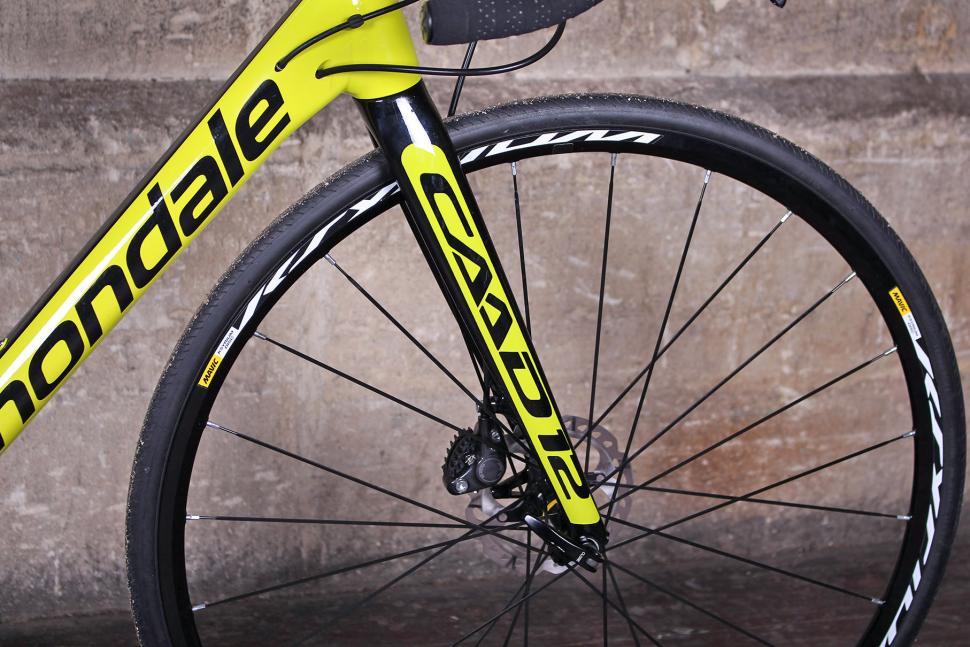


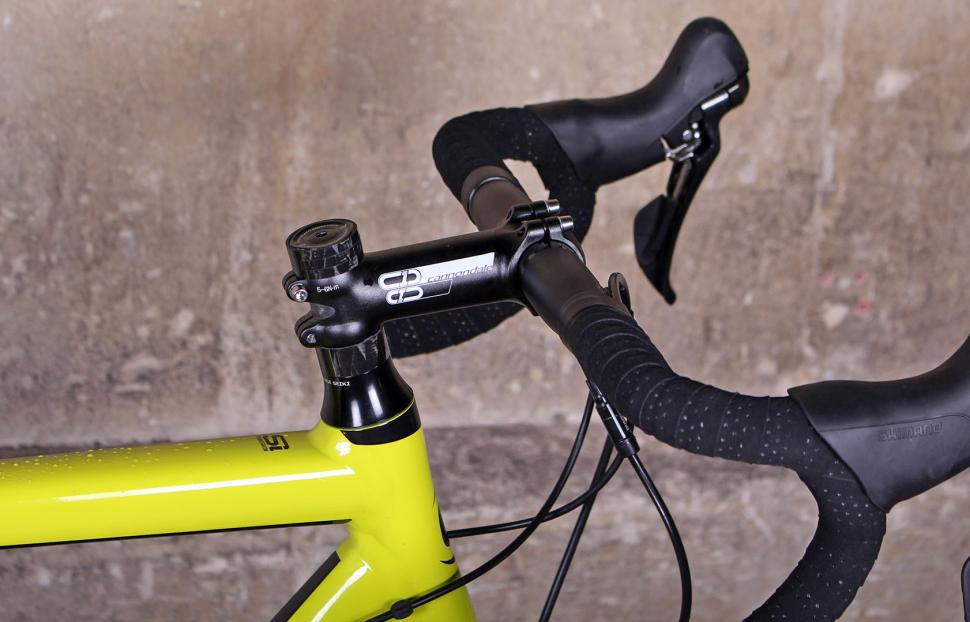










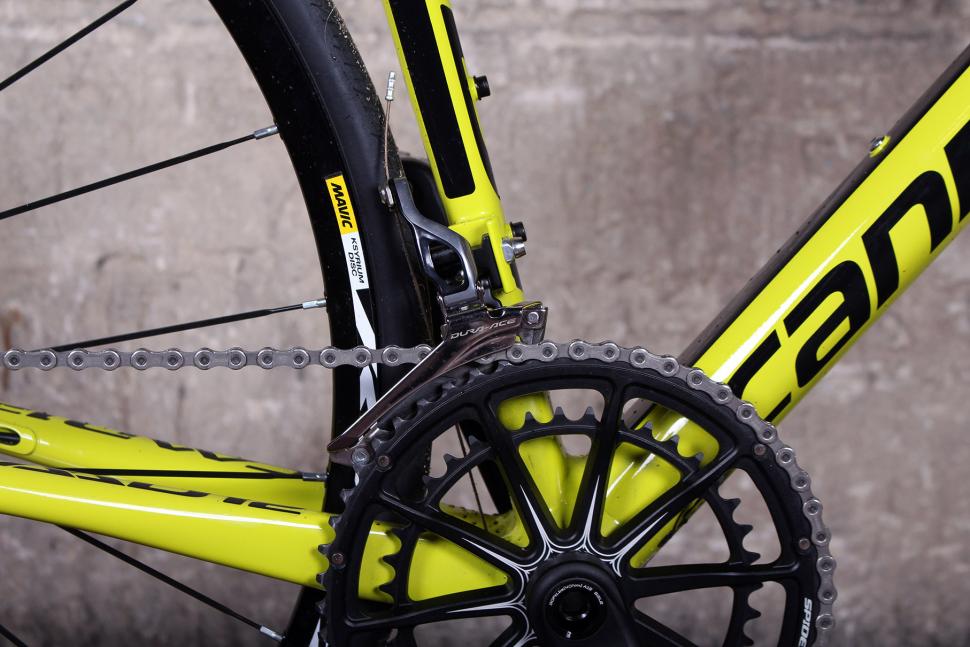


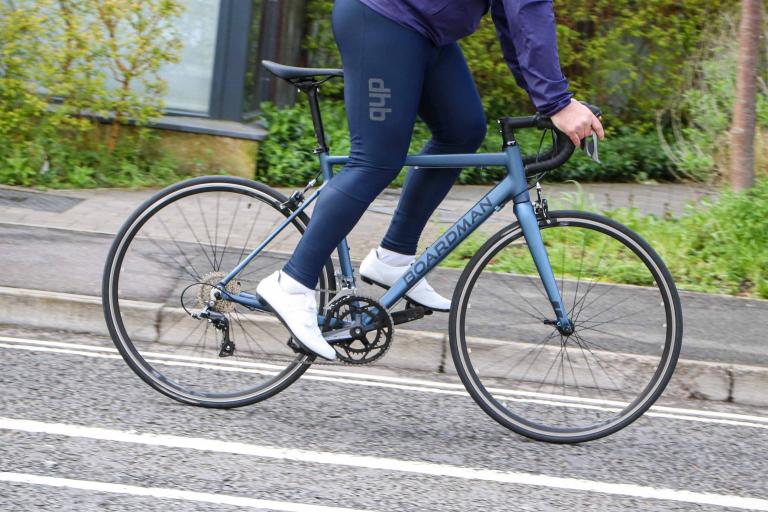
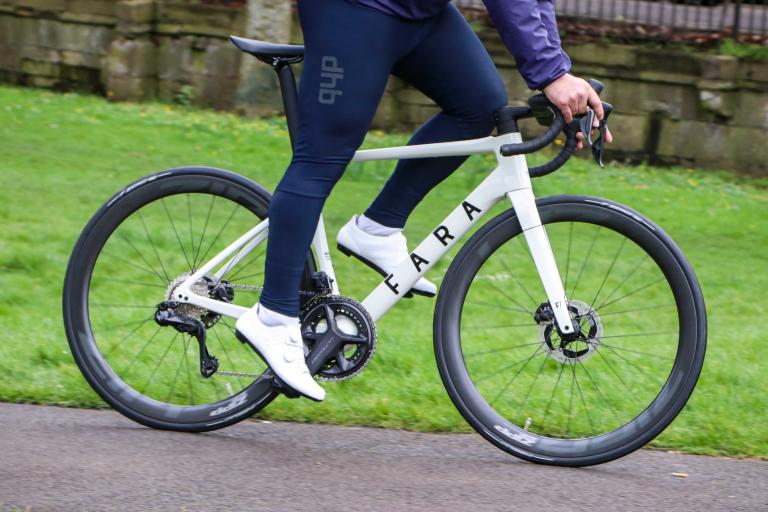
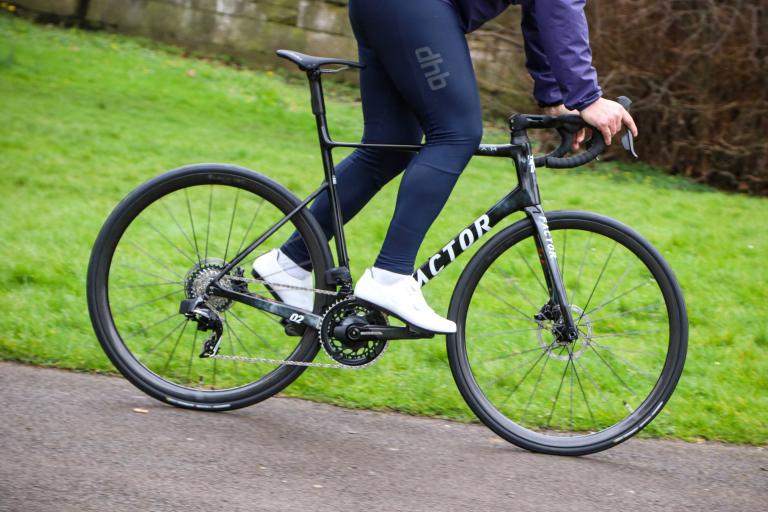
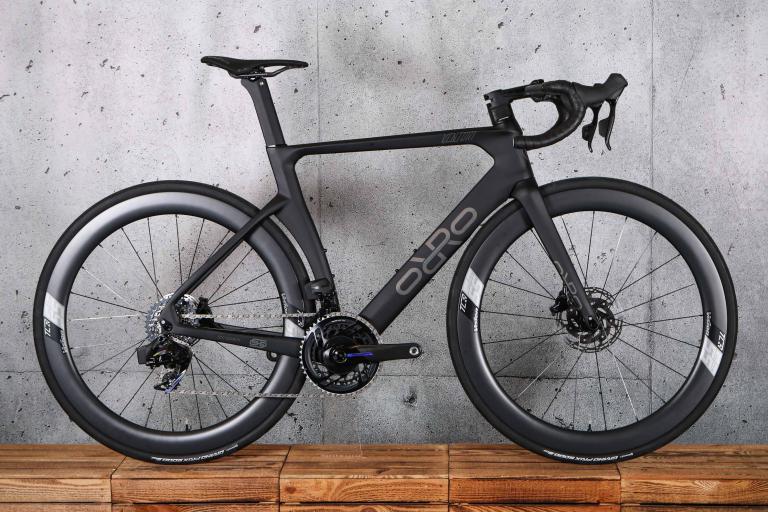
Add new comment
25 comments